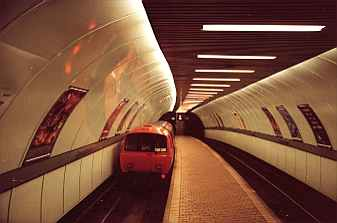FCC licensees outside Region II gain early access to 7100-7200 kHz
The FCC has given licensees operating in FCC-administered territory in Regions 1 and 3 early access to
7100-7200 kHz. The change was included in a massive Report and Order (R&O) in ET Docket 04-139, a
portion of which dealt with 40-meter worldwide realignment. ARRL CEO David Sumner, K1ZZ, credited
the efforts of Larry Gandy, AH8LG, and the American Samoa Amateur Radio Association, who supported
the ARRL's comments in the proceeding, for helping to advance the proposal. Gandy argued that during
a typhoon that struck American Samoa, communication would have been significantly improved had
amateur operators been allowed access to 7100-7200 kHz. Sumner said the ARRL was grateful to the
FCC for allowing amateur stations it regulates in Regions 1 and 3 to gain prompt access to 7100-7200 kHz.
"This will make it easier for amateurs throughout the world to use the very popular and crowded 40-meter
band and will facilitate disaster communications," Sumner said. He added that ARRL joins the FCC in
cautioning Commission-licensed amateurs outside of Region 2 to avoid interfering with broadcast stations
in the 7100-7200 kHz band during the transition period, which ends in 2009 per an agreement reached at
WRC-03. Other countries also have made 7100-7200 kHz available to amateurs, generally on a secondary,
non-interference basis. Sumner said that even with constraints, access to this band by amateurs in a
growing number of countries "is a significant benefit to the Amateur Radio Service," and he said the League
appreciates the Commission's efforts to extend this benefit to its licensees, especially those in the U.S.
Pacific insular areas in Region 3. In a footnote to the R&O, the FCC said amateur operators may file
interference complaints if they receive interference from HF broadcast signals directed to Region 2. "In the
current seasonal schedule, we observe that several HFBC signals are directed to the United States in the
band 7100-7300 kHz," the FCC noted. The FCC did not announce the effective date of the rule change.

Communications Check on Glasgow Subway
Nine members of the Greater Glasgow Raynet Group went to ground on Sunday 20 March when they were
asked to carry out a series of communications checks on the Glasgow Subway (underground railway) for the
City Emergencies Planning Officer. An emergency services tabletop exercise is to be held in April, and this
is likely to be followed up later in the year by a live on-site exercise. The group met at Govan Subway
Station and were taken by special train round the outer circle of the system to the location of the proposed
exercise, where they left the train and walked through the tunnel to the next station under the supervision of
a Subway official. In the selected section of the network, communications are hindered by the tunnel both
dipping and turning, preventing line of sight. Tests were carried out on 2m, 70cm, and on PBR high band VHF.
In addition to the underground tests, checks were made on communications paths between the tunnel and the
surface at two stations.
See website: http://clyde-valley.com/glasgow/under.htm
All about the Glasgow subway system
1 |
2 |
3 |
4 |
5 |
6 |
7 |
8 |
9 |
10 |
11 |
12
BRATS Home Page



